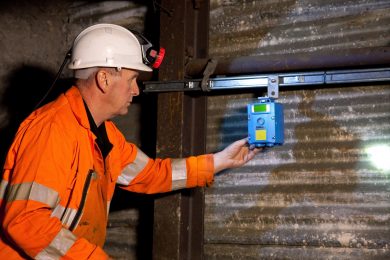Glyn Jones, CEO of Trolex recently outlined his thoughts on the big picture when it comes to mine ventilation. “Ventilation is a crucial part of all underground mining operations; it helps to take in fresh, cool air to the work environment and to remove stale, affected air from it – this includes small dust particles that could damage equipment and operatives. Without the right ventilation solutions, operational activity could suffer, machinery could be damaged and operatives could be exposed to dangerous hazards. Ventilation is required to dilute and remove hazardous substances, control the temperature and provide oxygen. But, in the event your current ventilation network is not delivering the quality you need, what can you do to improve it?”
Monitoring the mining environment is an essential part of workforce safety, and new technology means this can now be done in real-time, with data relayed back to a remote monitoring systems so that ventilation platforms can be adjusted accordingly. These platforms allow for the tracking, monitoring and assessment of the mining environment and enable the removal of hazardous substances and particle emissions in harsh and hazardous environments.
Optimising the real-time airflow, and monitoring the environment for changes in the atmosphere, are essential for improving air quality and ensuring health and safety standards are met. As well as helping to protect personnel, improving airflow is also essential for ensuring equipment is protected and remains operational, by removing dust particles, and other substances, which could interfere with mining equipment and cause extensive and expensive delays to projects.
It is an essential requirement of ventilation systems within industrial and mining operations that air distribution is controlled to ensure worker safety, protect equipment and optimise air quantity and quality. The efficiency of these systems is often set during the design stage and this, particularly within mining, can be a complicated task due to the need to monitor conditions across a large and changing environment in real time, and ensuring normal and abnormal conditions and be identified.
Better, connected technology, and more robust systems mean that remote monitoring has made it possible to evaluate the environment, understand airflow, pressure and gas concentration levels and adapt ventilation systems accordingly. Optimising the ability to spread clean air through the environment whilst removing particles and other potentially harmful substances should be a main focus during the planning stage, and ensuring you are choosing and installing the right equipment for the job should form a major part of any mining operation.
In times gone by, designing and developing ventilation systems was much more difficult, as equipment could be cumbersome and difficult to install in confined spaces, while an inability to monitor and predict environmental changes meant equipment might need to be moved quickly to new locations – which was not always possible. Improvements in technology now mean it is much easier to design and install mine ventilation systems and even create a scenario of ventilation on demand.
Utilising real time data from airflow sensors it is now possible to optimise ventilation fans and install mine-wide airflow and quality controls whilst improving efficiency by reducing energy consumption, saving on costs protecting the integrity of equipment for longer periods and generally improving worker productivity due to better conditions.
Controlling the environment is an essential part of any mining operation, and it is vital that all steps are taken to ensure data can be collected and analysed in real-time to help inform the designing and adapting of ventilation systems which not only improve the efficiency of developments, but ensure workers are always working in the safest environment possible.










